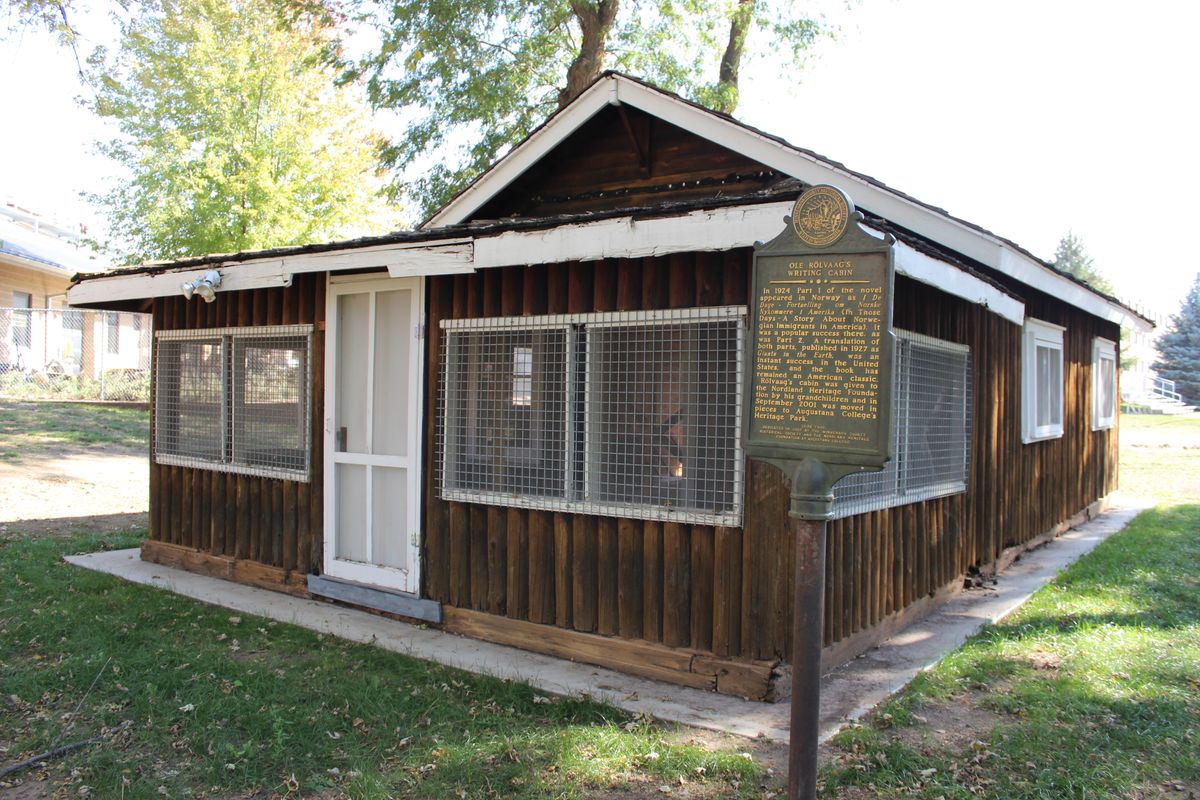O.E. Rolvaag cabin moves to permanent location in humanities grove

The Rolvaag writing cabin was permanently moved to the Fryxell grove on Aug. 9. Containing a historic past, the Rolvaag cabin has been a part of Augustana’s history for more than 100 years.
The writing cabin was originally located in Heritage Park between Grange Ave. and Prairie Ave. With the park demolished for the new Midco Hockey Arena, Augustana moved Rolvaag’s cabin to the west side of campus next to the Fryxell building.
Author O.E. Rolvaag wrote his well-known book Giants in the Earth, published in 1924 in Norwegian and translated into English in 1925, in the cabin.
“It is arguably the most important literary artifact the university has,” writer-in-residence and professor Patrick Hicks said. “It is one of those things that I enjoy taking students to visit so they can better understand a writer’s environment.”
Hicks often brings his students to see the cabin throughout the semester. Junior Ailin Montgomery visited the cabin in Hick’s First Year Seminar (FYS) class as a freshman.
“It’s a bit ironic,” Montgomery said. “Dr. Hicks gave us some context, but I didn’t really know who O.E. Rølvaag was. It wasn’t until I interned at the Center for Western Studies for the last year and a half and I ended working with the Rolvaag collection [that I understood], so I got that context later and it was so exciting.”
O.E. Rolvaag attended Augustana Academy in Canton, South Dakota. While studying there, he released Giants in the Green and other novels. He later attended St. Olaf to earn his B.A. where he later became a professor.
“Rolvaag got his start with us and he wrote about this part of the world and the Dakotas,” Hicks said. “He was one of the first Western voices to write about the landscape that surrounds us and is one of the most early prominent voices of Norwegian literature.”
Hicks said there are discussions about creating a path to the cabin to make it more accessible, but before that can begin, some renovations still need to be completed. The cabin needs some electric work and some insulation before it will be open to students as a writing environment.
“It’s a privilege when institutions care enough to present their history,” Montgomery said. “I think it says something about the place and how to preserve it, so I was really glad, having that memory from freshman year, to hear that we are keeping the cabin on campus, especially next to the humanities, as a representation of what you could leave here and what you can do.”



